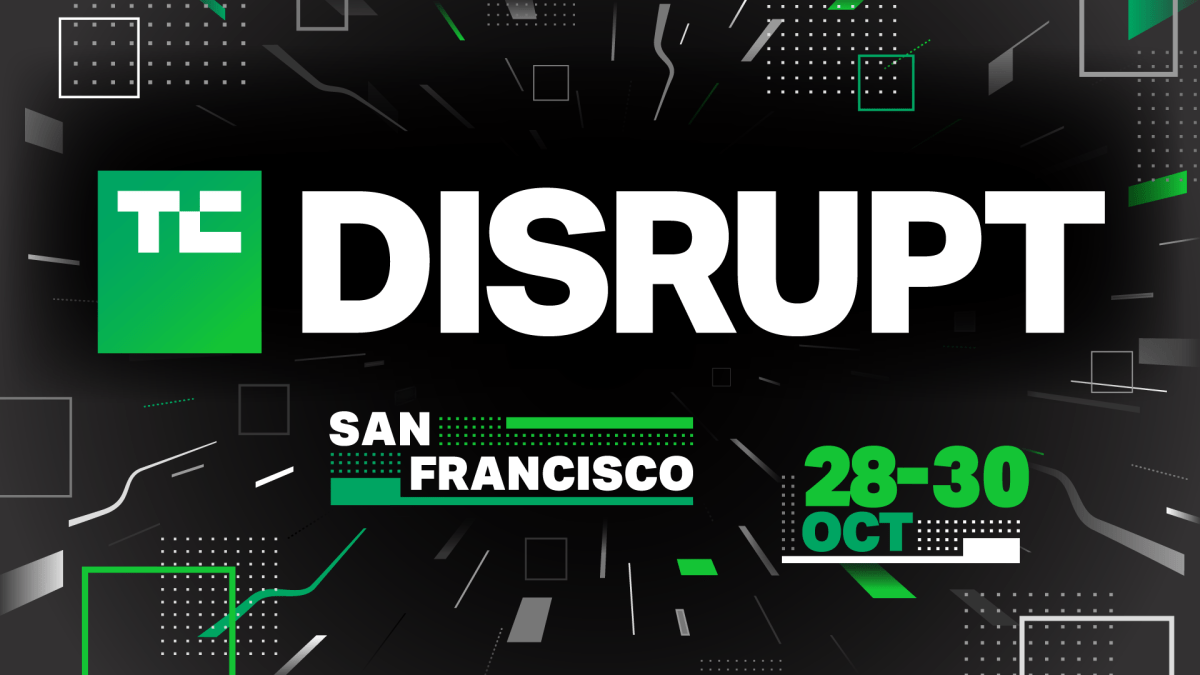Why AI will eat McKinsey’s lunch — but not today

Navin Chaddha, managing director of the 55-year-old Silicon Valley venture firm Mayfield, is betting big on AI’s ability to transform people-heavy industries like consulting, law, and accounting. The veteran investor, whose wins include Lyft, Poshmark, and HashiCorp, recently discussed at TechCrunch’s StrictlyVC evening in Menlo Park why he believes “AI teammates” can create software-like margins in traditionally labor-intensive sectors, and why startups should right now target neglected markets rather than compete head-to-head with giants like Accenture — though he acknowledged that disrupting outfits where relationships and trust matter is sometimes harder than Silicon Valley anticipates. This conversation has been edited lightly for length and clarity.
You think that law firms, consulting companies, and accounting services – collectively a $5 trillion market – will be completely reimagined by AI-first companies that operate with software-like margins. Prove it. What have you seen beyond PowerPoint presentations?
I think an advantage of a firm that has been in business for over 50 years is that it has seen all the trends, from mainframe to minicomputers to PCs, to the internet, to mobile, cloud, social and now this AI era. The example I would give is in the late ’90s, this concept of e-business came, which was: if I’m a physical business, I cannot survive if I’m just brick and mortar; I need to be click and mortar. Then outsourcing became a trend, and offshoring became a big trend. You couldn’t build a software services company without a presence in India or one of the emerging markets. The same thing happened with supply chains and manufacturing — China and Taiwan rose. So what is this new era with AI? Clearly, AI is a 100x force, and AI is teaming up with humans, hopefully to make them better. And I think it is, and it’s going to help reimagine business.
A lot of the repetitive tasks are going to be done by AI… and there’ll be two models. One is that you grow organically. The second is that you grow inorganically. . .
Can you give a specific example of how this will work?
What are the kinds of things an LLM or AI can do? Well, say I have to implement Salesforce. Who wants to go do that work? The human will come in and say, ‘I’m your client manager. You have to implement Salesforce.’ It’s the same set of things. Use AI as the horse to do it, and whatever AI can’t do, have the human in the loop.
Now, suddenly, if you start doing these kinds of things, you can have less work done by humans and more work done by AI, and [customers] only pay for AI when [they] use it.
And the market [entry] should not be to go after [big consulting and IT companies] like Accenture, Infosys, or TCS. Go after the neglected masses. There are 30 million small companies in the U.S., and 100 million worldwide that can’t afford knowledge workers. Provide them service as software. They say, “I need a receptionist. I need a scheduler. I need somebody to build my website…” AI should be used to [create] startup funding forms, with some human [involvement] for negotiation. You don’t compete with the Accentures of the world. You go after fragmented markets, where instead of charging per hour, instead of charging per month for a contractor, you charge per event.
So outcome-based pricing rather than time-based billing.
This is outcome based, yes . . . Cloud billing is like that; electricity is like that . . .If 80% of the work will be done by AI, it can have an 80% to 90% gross margin. Humans can still have a 30% to 40% margin. You could have blended margins of 60% to 70% and produce 20% to 30% net income. And believe me, most services companies make money. Tech companies don’t. They live on venture money and then public market money.

You just led the Series A for a company called Gruve a few weeks ago. It’s an AI tech consulting startup. What did you see in its early customer pilots?
I think this is where the combination of inorganic and organic happens. [Gruve was founded by] very successful founders who had done two services companies before [and] bootstrapped, and got them to $500 million in revenue each, and $50 to $100 million in profits. They started this time and said, ‘What do we know? We know security.” So they acquired a $5 million security consulting company [that offers managed security services]. And they said, “Let’s look at the people. All the growth from this point on will happen through AI.” And they grew that from [$5 million in revenue] to $15 [million in revenue] in six months. They literally have an 80% gross margin. It’s outcome-based. Customers love it. Cisco loves it. They say, “Hey, I’m not getting hacked. Why am I paying for all these security people?” If you outsource, [a vendor has traditionally charged] $10,000 a month. [Gruve] says, “ [You pay us] zero. If you get hacked, if there is an event, if I look at it, then you pay me.”
Can’t companies like McKinsey just buy these AI capabilities? They’ve got big businesses they don’t want to lose.
Yeah, I think what’s going to happen is this is where the innovator’s dilemma comes in. When enterprise software companies, which were perpetual license companies, saw SaaS companies emerging, they didn’t want to adopt [the model] because [SaaS companies] charge companies monthly instead of five years up front. The enterprise companies also collected a 20% maintenance fee. It was hard [for them] to get off that drug and to say, “Oh, I’ll charge you monthly.” The business model innovation was the key thing. They didn’t do it. So McKinsey and Accenture, with so much dislocation, they’re going to be busy serving their clients [which is why I advise founders to] go after the neglected masses. Figure out a unique go-to-market strategy and service somebody they [an Accenture can’t come down market to serve].
But they’re going to get reimagined too. So these small companies, which are not competing with them today, mark my words: in 10 years, they will be competing with them. And those big companies – McKinsey, BCG, Accenture, TCS, Infosys – all have the innovator’s dilemma [and are asking themselves]: when do I do it? [When do I switch to an outcome-based AI model?] Because as a public company, my revenues are going to go down from predictable revenue to utility-based revenue.
You carved out $100 million from your recently raised funds to dedicate to “AI teammates” last fall. What makes a true AI teammate versus an AI tool?
There’s a lot of buzzwords in the industry. First it was copilots, then AI tools, AI agents, AI teammates. So the Mayfield thesis is that an AI teammate is a digital companion that collaborates with a human on shared goals and gets to better outcomes. The technology it might be built on could be agentic technologies or copilots. The manifestation of it is, “I’m an HR teammate. I’m a sales engineering teammate.” The aim is not to replace; the aim is to team up and collaborate together.
When people started talking about teammates and assistants, it sounded novel, but I wonder if that’s going to look callous as more people lose their jobs. Does Silicon Valley have a marketing problem?
Absolutely right, and I think we need to not sugarcoat it. We need to address it head-on. . .Yes, there’s going to be job displacement, but humans are smart. They’re the jockey. The horse here is AI. We will reimagine ourselves. We will reinvent ourselves. Today, the focus is on cutting costs, but we will figure out how to expand our markets, how to increase revenue. This happens with every technology wave that comes. When Microsoft Word came to PCs on the desktop, people thought [executive assistants] were out of business. Then Excel came, and accountants who did calculations — everyone thought they were out of business. We saw the same with Uber and Lyft. People thought taxi drivers would go away. But what happened instead? The markets expanded.
My thesis is, the way emerging markets like India, China, and Africa never had landlines — you couldn’t dig copper, so they went wireless, cellular — that’s what’s going to happen with many markets. AI will do the work where humans are not even available to serve that customer. So, long-run, I’m very, very bullish. In the short-run, there will be pain, but no pain, no gain.
Speaking of coding, a recently announced “vibe-coding” deal centered on a six-month-old Israeli company that had just reached 250,000 users per month and $200,000 in monthly revenue. It was bought by another Israeli company, Wix, for $80 million in cash. Does that math make sense to you?
Actually, these days, no math makes sense. We’re in the AI age. You don’t know what’s going to happen. I’m surprised that with $2.4 million in [annual recurring] revenue they only sold for $80 million. I thought it would be $800 million, right? [Laughs.] In today’s world, you don’t know. It’s a marketplace.
How do you invest in that market?
That’s where the secret recipe comes from people who are proven investors. They’ve cracked the code. It’s not a science; it’s an art. It’s like the 10,000-hours [rule]: the more you practice this, the better you get. And the firms that have been around for 50 or 60 years – we’ve seen all kinds of bubbles.
The number-one rule is, have your own North Star. Have discipline and have no FOMO, because FOMO is for sheep. And if you have those two or three things, your own strategy and no fear, [you’ll do well]. Just remember one thing: for people [in this audience] who are VCs, we’re in the money management business. We’re not about collecting logos. We are about taking small amounts of money and making them bigger.
During this part [of the cycle], a lot of money will get made. But I think 80% of the people are going to lose money. They don’t know what they’re doing.







-SOURCE-Simon-Hill.jpg?w=960&resize=960,517&ssl=1)



